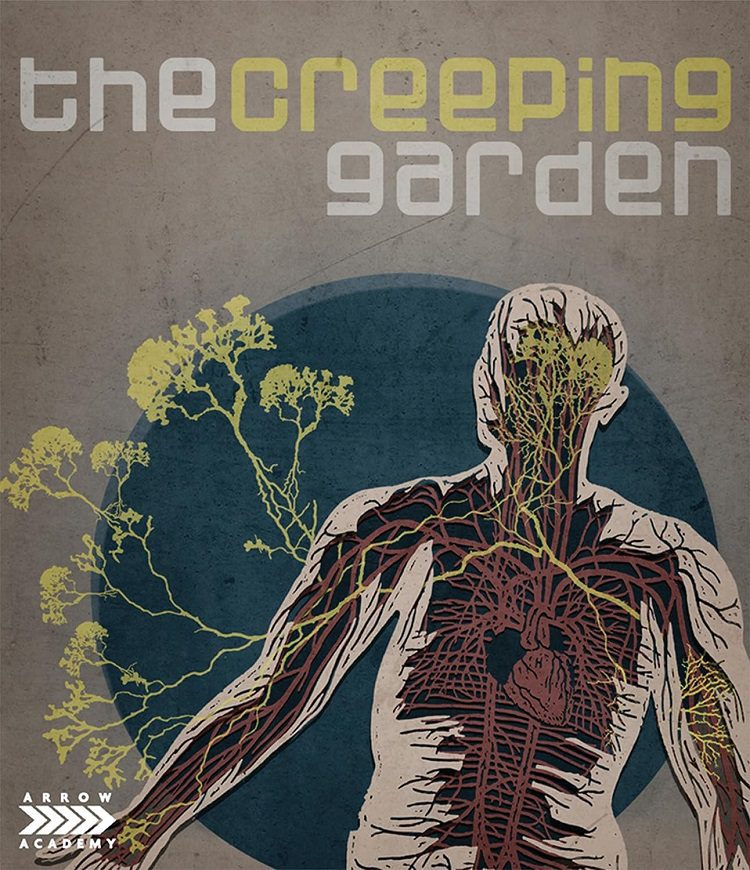
The Creeping Garden opens with a 1973 newscast that reports on some “blobs” being found in the backyards of some people’s households in Texas. This makes it seem like something had leapt from the horror-movie genre and made its way to reality. The fact of the matter is, these so-called blobs that were found in people’s backyards are called slime molds, and they’ve been around for quite some time. Unfortunately, not many people know about it, and, for a while, it was considered to be another type of fungus based on its look. But the difference between fungus and a slime mold is the slime mold has the capability to move and absorb certain nutrients in order to survive, namely carbohydrates. There is also a mention in the documentary on how it was, at one point, considered to be an animal.
Directors Tim Grabham and Jasper Sharp don’t make The Creeping Garden just your average documentary about the study of slime mold. It does offer quite a bit of information about the discovery of slime mold and how they have been classified as their own thing. We’re first introduced to Mark Pragnell, an amateur mycologist who is shown roaming the forest looking for different types of slime mold on dead logs. He explains that slime mold is, in a sense, like fungi because it can be found on dead logs, but fungus remains dormant and slime mold has the ability to move around. Yet, as Pragnell mentions, it doesn’t move that fast. It only moves at 1/20 of an inch per hour.
Grabham and Sharp offer close-ups of the slime mold in action, and it turns The Creeping Garden into a sort of horror movie, as some of the lighting flickers like it was part of a David Lynch movie, and the soundtrack by Woob and Jim O’Rourke adds to the eerie factor of the documentary. It’s a hypnotic and dazzling experience that would have been a serious treat to see on the big screen, especially on something like IMAX.
What’s interesting about The Creeping Garden is that it takes the viewer from the forest and shows how slime mold works in other parts of the world. Heather Barnett is an artist who uses slime mold to create wallpaper and interactive art pieces. In one hilarious scene, she recruits some volunteers at an exhibit to recreate the behaviors of slime mold by having them tied together by rope and chasing an oat.
The Creeping Garden also looks at how slime mold is more than just something that can be viewed through a microscope or through time-lapse. One example shows composer Eduardo Miranda is able to use it to create piano music, while researcher Ella Gale uses it to create facial features on robotic heads. It’s rather fascinating to see how many different ways it can be used.
Grabham and Sharp have crafted a visually stimulating and insightful documentary about a world that many, myself included, didn’t even know existed. The Creeping Garden is a fun, quick ride through something that proves there are real things out there that can be stranger and yet more interesting than what we see in the movies.
The 3-disc Arrow Academy release of The Creeping Garden comes with both versions of the movie on Blu-ray and DVD, as well as the soundtrack by Woob and O’Rourke on its own disc. It also has a reversible sleeve and a booklet with photos and an interview with Sharp in which he discusses the approach taken when it came to getting the documentary made.
This set comes with a bunch of special features, including a commentary from the directors, and some short pieces that look at biocomputer music and give more time to spend with one of the interviewees from the documentary. The special features also contain three short films that served as inspirations on the look of The Creeping Garden. They are Milk, which shows a glass of milk being poured at a slowed-down frame rate that makes it more unsettling than one would think. Rotten is nothing but footage of a snail caught on VHS and edited to make it look like a horror film I would have snuck past my parents during my youth. Paramusical Ensemble is the only short film of this section that is a straightforward documentary, and it shows how people with severe motor impairment are able to make music using their brainwaves.
This is certainly something worth checking out for those who have an interest in biology or those who have a general curiosity as to what slime mold is and how it can be used outside of scientific study.